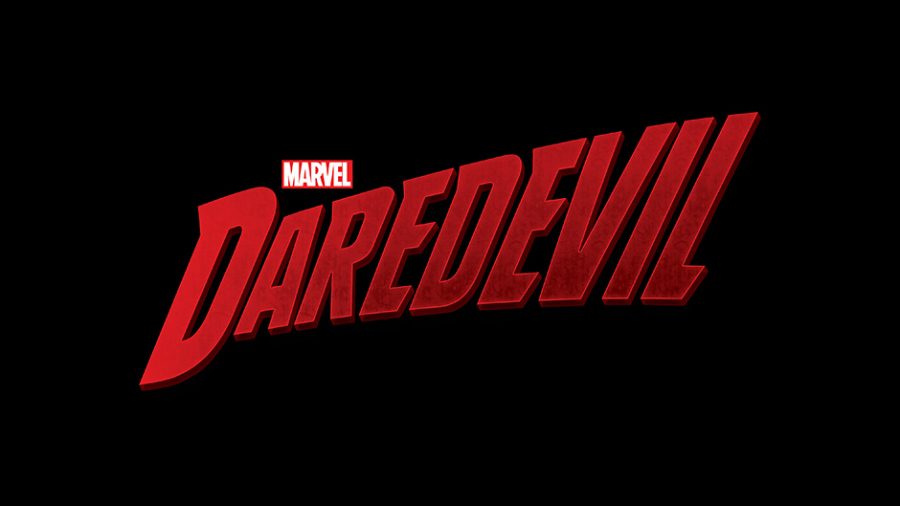Review: “Daredevil” Season 3
December 5, 2018
This review contains spoilers for Season 3 of Marvel’s “Daredevil.”
The third season of “Daredevil” couldn’t have come in a more needed time for Marvel’s Netflix line of shows. The show returned to its roots by moving away from the mysticism that interfered with the gritty and grounded tone of the third-half of the second season. In doing this, season three succeeds in telling a more focused and compelling narrative that is both on par, and in some areas, better than season one.
In the aftermath of “Defenders,” Matt Murdock (Charlie Cox) was left broken both physically and spiritually. Matt has been recuperating for months at the church that raised him after the murder of his father when he was a child. However, with the death of both his mentor Stick (Scott Glenn), his lover Elektra (Elodie Yung), and with Wilson Fisk (Vincent D’Onofrio) newly released from jail, Matt is beginning to question his faith in his religion, the justice system and his purpose as Daredevil. Matt makes the choice to abandon his civilian life and focus his time solely as Daredevil. As Foggy Nelson (Elden Henson), and Karen Page (Deborah Ann Woll) begin to lose hope that Matt is still alive, Fisk makes a deal with the FBI to out several major crime families in exchange for the protection of his lover, Vanessa Marina (Ayelet Zurer) who has been charged as an accessory to his crimes in the first season. Ray Nadeem (Jay Ali), an FBI agent facing a financial crisis after paying for his sister-in-law’s cancer treatment, has been placed in charge of handling the case in the hopes of receiving a promotion.
One of the things that works well this season is the friendship between Matt, Karen and Foggy. Cox does a good job at portraying an emotionally broken Matt Murdock, as he captures the emotions and struggles of someone battling personal demons while also re-evaluating their purpose in life. Matt’s journey causes him to isolate from Karen and Foggy despite their protests to help him bring down Fisk. Karen and Foggy also go through their own respective arcs, and the show uses the separation of the main characters as an advantage to provide strong character development for the two. Karen goes through a great arc this season, while she can and has been a polarizing character in the past, her struggle to confront and put away the man who tried to kill her leads to the some of the more emotional scenes in the season. A great example of this is in a conversation between Fisk and Karen that displays her strength and vulnerability. Her talents as an investigative journalist is what makes her a worthy opponent for him, as she can expose his corruption to the public, which Fisk in turn tries to dismantle her credibility. Though Foggy’s arc as running for District Attorney has great moments, it doesn’t have the same weight, or satisfying conclusion as the former two arcs. The season doesn’t give enough time to flesh out his sub-plot, resulting in an arc that feels directionless until the final three episodes of the season where all the three protagonist’s individual stories come together.
As expected, the fight scenes in this season are fantastic. In a majority of superhero media, heroes engage in intense battles with their adversaries, but barely feel overwhelmed during or after the fight. In “Daredevil” season three, Matt gets injured, and exhausted in his fights with his opponents. His first confrontation with one of the antagonists of this season proves too much for him to handle, forcing him to rethink his strategies in combat. This direction in the fight choreography creates action sequences that are more brutal, intense and enjoyable to watch.
D’Onofrio once again gives an excellent performance portraying a character who is manipulative, unpredictable and terrifying. One minute he will speak in a very elegant manner with a soft tone, only to raise his voice mid-sentence, and become aggressive. Fisk plays on people’s fears, and either gives them the illusion of empathy, or uses blackmail to convince them to align with him. He is also not hesitant on disposing his associates once they have outlived their usefulness. Another great attribute of Fisk is the effect his mystery has on the pacing of the story. You know right from the beginning Fisk is introduced that he is plotting, but the show never gives you clear hints as to what his ultimate motive is, and how he will accomplish it. Even when the mystery starts to unveil, new twists emerge that builds onto it, adding to the mystery and enticing the viewer’s curiosity. Past Marvel Netflix shows have been criticized for their thirteen-episode structure, with usually the middle-portion containing a lot of filler that distracts from the main narrative. However, with eight episodes building up the mystery surrounding Fisk’s true agenda, the show never has a moment that feels bogged down with filler, and by episode nine when all is revealed, the stakes are high enough, and every plot thread that had been built up comes to fruition with the last four episodes.
The secondary antagonist, “Dex” (Wilson Bethel) a.k.a. Bullseye, is another highlight. Dex is another victim of Fisk’s manipulation, as his mental state begins to decline, to the point where he more resembles the psychopath “Daredevil” fans know as Bullseye. The writers give him enough backstory to give the audience a range of emotions of sympathy, and intimidation. Much like Fisk, you always dread when he appears on the scene, and his initial encounter with Matt in episode six makes him a dangerous opponent that can match Matt in combat, with his ability to ricochet regular objects to hit the target in one-unavoidable attack.
Another surprising element to this season is Rahul “Ray” Nadeem. Nadeem is new to this show, and at first, it’s hard to know the direction the writers are taking the character, especially when he is given an equal amount of screen time as the main cast. Initially, it’s a little worrying, as you might suspect that his presence would get in the way of the conflict between Matt and Fisk, but on the contrary, it adds to it, and the conclusion to his character arc is both tragic and satisfying in how it affects our heroes and villain. In the end, you come to appreciate his inclusion to the show, and root for him throughout.
“Daredevil” season 3 is a return to form for Marvel’s Netflix series. Its tale of faith, redemption and control, combined with amazing performances and fight choreography makes this one of the best television shows not just from Marvel but on the entire Netflix streaming service. Even with thirteen episodes, the season never feels like it is overstaying its welcome and is a great choice for binge-watching and fans of the character of “Daredevil.”












